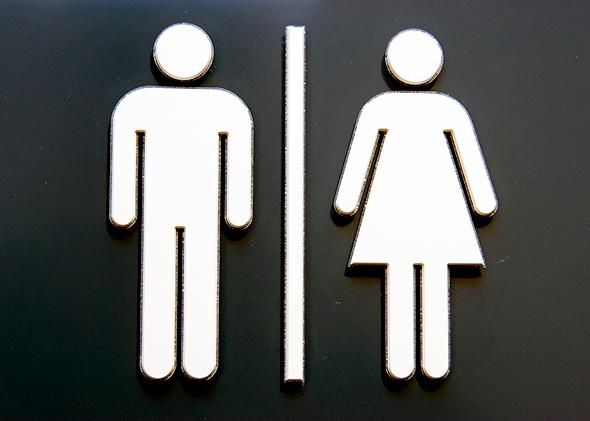Gender-divided bathrooms have long been a point of contention for queer people, especially those identifying as trans*. For those whose gender identity or presentation defies the clear-cut gender binary, the necessary urge to relieve oneself often ends with a painful resignation to either male or female when in public. The result is discomfort for everyone involved: When I androgynously walk into a restroom and am greeted by a negative reaction from another bathroom patron—which has ranged from startled gasps to being shoved back into the stall—I assume their outrage is of the same degree as my frustration at knowing I’m not fully welcome in either restroom.
Campaigns to make gender-neutral bathrooms available have been waged across the country over the last few years. Interestingly, though some have been launched to ensure equality in specific locations, such as Multnomah County, Ore., and Philadelphia, activism aiming to establish gender-neutral bathrooms generally focuses on schools and colleges. These campaigns range from one led by a 16-year-old in Vermont to a recent wave of activism at universities and colleges.
Most recently, a group of students at Wesleyan University conducted a DIY campaign to de-gender the school’s bathrooms. The students leading the effort at Wesleyan believe campus bathrooms should no longer be labeled by gender and feel university policy and campus discussions have lagged far behind the needs of trans*/gender students. (The Wesleyan activists use the term de-segregating rather than neutralizing—a reference that seeks to invoke a sense that the discrimination facing trans*/gender people is on par with other civil rights efforts.) A similar DIY effort took place at Brown University in reaction to the re-gendering of previously gender-neutral bathrooms in one campus building after a massive renovation.
Arguments against neutralizing bathrooms are also most often based in the realm of discomfort—women with histories of sexual assault or rape will be made uncomfortable by the presence of men in the bathroom, especially if there’s any possibility of seeing a penis at the urinals; men will not feel comfortable using the urinals with women in the room or having to urinate sitting down in the absence of urinals. People often have a visceral oh hell no reaction to the concept of allowing people of any gender to use any public restroom. But from a queer perspective, most of these arguments are questionable.
The foremost reason for being anti-bathroom-neutralization involves the sensitive issue of sexual assault. Many people who believe gender-neutral bathrooms would benefit society in both providing for the needs of trans* people and helping to alleviate severe separations between the genders don’t want to be insensitive to the needs of sexual assault survivors. That said, conceding the fight for neutralization solely based on this concern ignores the fact that sexual assault can—and more importantly does—occur among members of every gender, and all survivors of assault deserve the same sensitivity. Choosing not to rid society of the bathroom divide because of an assumption that sexual assault survivors are all women who have been assaulted by men perpetuates a culture that embraces this as inevitable. This opposition also minimizes the existence of sexual assault that is not male-on-female.
Right now, it’s not clear how Wesleyan will respond to the protests. An open forum recommended that single-person, easily accessible bathrooms be made available in every building. This solution responds to both trans*/gender individuals’ and sexual assault survivors’ need for a safe space. Of course, even if such an option were possible, the issue of bathrooms being seen as private, gendered spaces remains.
Why is the bathroom seen as an untouchable, unchangeable safe space? Naturally, everyone wants to be comfortable when taking care of bathroom business, but how is a restroom different than other public spaces in which people want to be left alone? Is it simply a social construction? If comfort is the main concern, why is the comfort of some people privileged over that of others? And are we comfortable with that?
